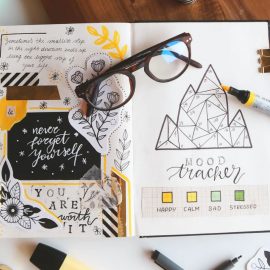

This article is an excerpt from the Shortform book guide to "The Power of One More" by Ed Mylett. Shortform has the world's best summaries and analyses of books you should be reading.
Like this article? Sign up for a free trial here.
What does your inner circle say about who you are and where you’re headed? How can you build relationships with people who will help you reach your full potential?
According to Ed Mylett, relationships are crucial to your success in life. Your inner circle shapes everything from your daily habits to your long-term achievements, which is why choosing these relationships carefully can transform your life.
Keep reading to discover how to build meaningful connections that will elevate your personal and professional growth.
Ed Mylett on Relationships
According to Ed Mylett, relationships are essential to success in every area of life. Specifically, he recommends you carefully choose your inner circle. These are people who inspire and challenge you to be your best and bring out the best in others.
Mylett advises you to form close relationships with people who make you better. The people around you profoundly shape your life and success. While all your relationships shape you to some degree, your inner circle influences you the most. This group includes your closest connections, such as romantic partners, close friends, and mentors.
(Shortform note: Depending on your attachment style, building an inner circle of close relationships may be easier or harder for you. If you have a secure attachment style, you may find it easier to develop trusting, stable relationships. However, if you have an insecure attachment style—anxious, avoidant or disorganized—you may struggle more to let people get close to you. While your attachment style is influenced by your earliest bonds with caregivers, you can work to develop a more secure style. By surrounding yourself with people who make you feel safe and supported, you can gradually learn to open up, share your feelings, and build the kinds of mutually uplifting relationships that Mylett recommends.)
Mylett suggests you first examine your current inner circle. Ask yourself if the members of your circle have the qualities, achievements, or emotional states that you aspire to have. As you go through life, you may find that some relationships no longer serve you as they once did. It can be difficult, but you must be willing to move these people to your outer circles to make room for new connections that help you reach your potential.
(Shortform note: In The Compound Effect, Darren Hardy suggests you sort your close relationships into three categories: dissociations (negative influences who don’t seem to be growing), limited associations (people who are fine to be around occasionally but eventually have a dampening influence on you), and expanded associations (people with positive qualities you’d like to emulate). Sorting your close relationships can help you decide not only who to keep in your inner circle but also how much time you should be spending with different people.)
Once you’ve pruned your inner circle, form new relationships with people who inspire and challenge you. Being around diverse perspectives and experiences keeps you from becoming stagnant and helps you to grow personally and professionally. Mylett recommends you look for people who complement your strengths and weaknesses. For example, if you’re a creative type who tends to think in the abstract, you might seek out an analytical thinker as a counterweight.
| How to Form Close Relationships Although Mylett recommends building an inner circle of people who challenge and inspire you, he doesn’t explain how you can form these close relationships. Other authors provide tips you can consider: 1. Find supportive, successful people. In The Success Principles, Jack Canfield suggests several ways you can meet people who can challenge or inspire you: Volunteer for leadership roles in an organization you care about, attend conferences in your field, or join clubs, civic groups, or societies in your field. 2. Practice active listening. When you meet potential friends or mentors, focus on listening more than speaking. Observe their body language, show you’re paying attention by making eye contact and nodding, consider the underlying message of what they’re saying, and ask clarifying questions. Active listening shows you’re interested in the other person, which makes them want to connect with you more. 3. Share your true self: In Braving the Wilderness, Brené Brown says you must be yourself to form closer connections. You must be brave and vulnerable to say what you believe and feel regardless of how others may react. Although this is scary, if you stay tight-lipped about your feelings and the things you care about, people won’t be able to get to know you on a deeper level. When you share your true self, you create opportunities to have longer, more meaningful conversations and truly connect with people. |

———End of Preview———
Like what you just read? Read the rest of the world's best book summary and analysis of Ed Mylett's "The Power of One More" at Shortform.
Here's what you'll find in our full The Power of One More summary:
- The power of an extra-mile mindset and how to adopt one
- Tips for building an inner circle of people who support your goals
- How to develop a tolerance for doing hard things






